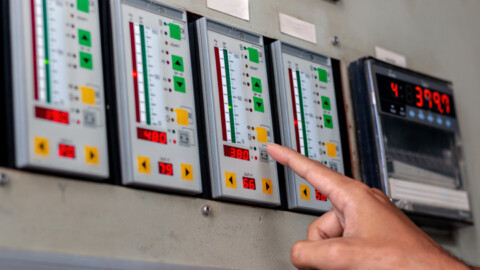What happens when a fire hydrant system is left unmaintained and unserviced? When subjected to a routine hydrostatic test, they can sometimes fail.
Fire hydrant systems are required to be hydrostatically tested by AS 1851-2012 every five years. Hydrostatic testing involves subjecting the system — including pipes, valves and connections — to the required amount of pressure to determine its reliability.
If the system passes the test, it should reliably operate at the design working pressure, and the fire brigade should be able to use it in a real fire scenario effectively.
Fire Protection Association Australia (FPA Australia) Senior Technical Officer, Brett Dundules, said, “Fire protection routine service providers are often contracted on up to three-year contracts and often owners don’t know, understand or detail that the required five-yearly hydrostatic test needs to be conducted every half decade.
“As the fire protection service provider’s contract is for three years and the hydrostatic test is required every five, it’s not uncommon for it to be overlooked or ignored.
The building owner should have awareness of this and liaise with their routine service provider to ensure the hydrostatic test is carried out when it’s due.”
Correct service periods
Lengthy periods (beyond five years) between hydrostatic tests increase the risk of system failure.
This could result in the uncontrolled release of water, which can damage property beyond the need to repair the hydrant system.
Damage as a result of failures — demonstrated via hydrostatic tests — is often erroneously levelled at the fire protection service contractor engaged to test the system.
In reality, by undertaking the test, the fire protection service contractor often simply demonstrates that the system may have been neglected for a long time, and would not have functioned as expected in a fire.
As a result, firefighters and occupants would be exposed to a higher fire risk.
Managing contractor risks
So what should be done to reduce the risk and potential exposure faced by the service contractor when conducting routine tests?
According to Alan Wilson of Alan Wilson Insurance Brokers, who has managed many claims because of this issue, many fire protection industry members mistakenly proceed with the hydrostatic pressure test without informing their clients of the potential risks and issues.
“Some systems will not have been properly tested for more than five years and it may look okay from the outside,” Mr Wilson said.
“[But] over time, the insides of pipes deteriorate—sometimes very severely and relatively quickly.
“Without testing, it’s likely that this potentially catastrophic situation will remain unknown until there is a fire and the system is used by the fire brigade, who should be able to rely on system performance to assist them to undertake their role.”
Testing requires the pressure in the system to be gradually increased to 1.5 times the design working pressure of the approved design.
This allows for some redundancy to account for the additional pressure caused by water hammer, and the variable operation of fire brigade pumping appliances that might be boosting the system during a fire.
Mr Wilson said that in his experience, most owners, clients, building managers, facility managers and their insurance companies automatically blame the routine service contractor for bursting the pipes.
“If the system was routinely serviced and tested properly, then the likelihood of bursting would be minimised. However, this is at a cost to the client.”
To reduce legal liability, Mr Wilson advises that routine service contractors preparing to undertake hydrostatic tests on hydrant systems should:
• Advise their client about the risks
• Clearly explain what they will be doing and why
• Have their client sign a waiver stating they understand the risks and therefore do not hold the contractor responsible if the causal issue is system failures that the hydrostatic test is intended to identify, including corroded pipes or fittings, poor connections or lack of routine servicing
“This is a real issue,” Mr Wilson said.
“Why should a contractor be responsible for their clients’ rotten pipes, especially if they got that way through neglect?”
Of course, if a pipe bursts through the contractor’s error — such as putting too much pressure in the system when testing — then their public liability or professional indemnity insurance will cover this.
Mr Wilson recommends that all contractors carrying out hydrostatic tests should use a hydrant and sprinkler testing information form, similar to the type he provides his customers.
“It is basically a waiver form. It states the issues and the results and the client must sign it off. If the client refuses to sign the waiver, we tell our insured customer not to do the testing,” Mr Wilson said.
This article was originally published in Fire Australia Magazine, and is republished here with permission.





















